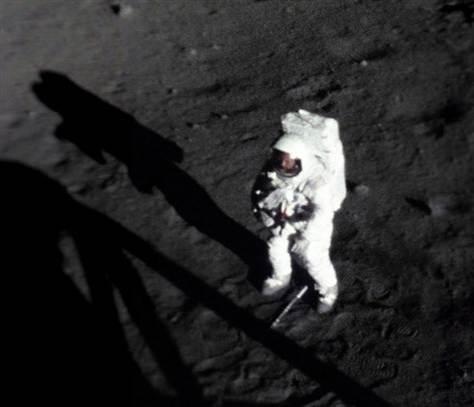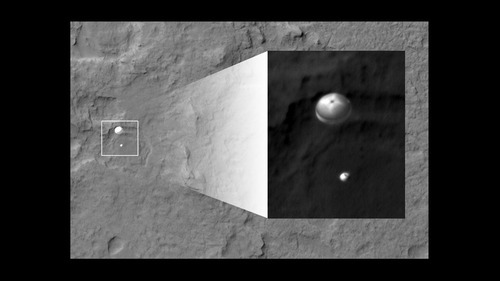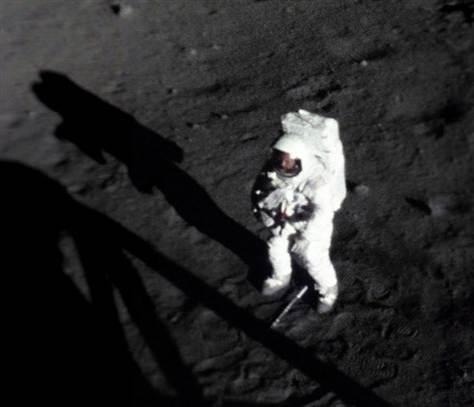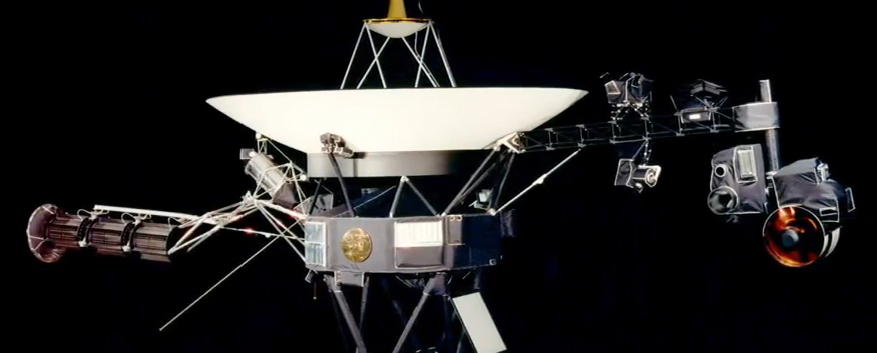Does my Science look big in this? August 2012 in review

August was a momentous month for science and technology. In my top five events are: NASA landed a car-sized rover on Mars; the first man to walk on the Moon, Neil Armstrong dies; Harvard scientist create a cyborg tissue; Swedish researchers detail how Parkinson’s disease spreads through the brain; and Voyager 2 turns 35.
Without a doubt the technology achievement of the month goes to NASA. They landed the rover, Curiosity, successfully on Mars at 1:31 a.m. EDT August 6, 2012. Ending a 36-week flight and beginning a two-year investigation. What makes this noteworthy? For one the coverage and access NASA provided in real time. From the launch to the daily updates to the ‘on the spot’ coverage of the entrance-descent-landing sequence live from the Pasadena control-room. Showing that engineers and scientists are human after all.
I was delighted to see the sky-crane landing working to perfection. As the system were all bought to life one-by-one the science exploration staff are eagerly anticipating zapping, sampling and analysing rocks, regolith and atmosphere.

“Today, the wheels of Curiosity have begun to blaze the trail for human footprints on Mars. Curiosity, the most sophisticated rover ever built, is now on the surface of the Red Planet, where it will seek to answer age-old questions about whether life ever existed on Mars, or if the planet can sustain life in the future,” said NASA Administrator Charles Bolden. “This is an amazing achievement, made possible by a team of scientists and engineers from around the world and led by the extraordinary men and women of NASA and our Jet Propulsion Laboratory. President Obama has laid out a bold vision for sending humans to Mars in the mid-2030’s, and today’s landing marks a significant step toward achieving this goal.”
The bold vision for sending humans to Mars was poignant. Neil Armstrong, the first man to walk on the moon during the 1969 Apollo 11 mission, died, following complications resulting from cardiovascular procedures. He was 82. Without a doubt Neil Armstrong, Buzz Aldrin and Michael Collins were childhood heroes to me. They along with the other astronauts of both the Apollo and Gemini missions were a key inspiration in firstly my interest in and secondly my career in science.

“Houston, Tranquillity Base here. The Eagle has landed,” Armstrong said, telling a tense and waiting Earth that men had finally reached the lunar surface. Neil Armstrong was also a reluctant American hero who always believed he was just doing his job. A refreshing change from the current days of hyped useless celebrities and where the word awesome is applies to every mundane activity. Traveling to the Moon, that inspires a sense of awe.
Meanwhile researchers at Harvard have grown cyborg tissues with embedded nanoelectronics. They have reported how they developed a system for creating nanoscale “scaffolds” which could be seeded with cells which later grow into tissue.
Though a number of potential applications exist for the technology, the most near-term use may come from the pharmaceutical industry. Researchers could use it to more precisely study how newly developed drugs act in three-dimensional tissues, rather than thin layers of cultured cells. The system might also one day be used to monitor changes inside the body and react accordingly, whether through electrical stimulation or the release of a drug.
Parkinson’s researchers at Lund University for the first time were able to follow events in which misfolded proteins travel from sick to healthy cells. This model has never before been identified so clearly in a living organism. The experiments also show how the transferred proteins attract proteins in the host cell leading to abnormal folding or “clumping” inside the cells. This is a cellular process likely to lead to the disease process as Parkinson’s progresses, and it spreads to an increasing number of brain regions as the patient gets sicker.
The aim of the research is to better understand how Parkinson’s pathology progresses and thereby uncover novel molecular targets for disease-modifying treatments.

Finally what an inspiring longevity story. Thirty-five years ago, NASA’s Voyager 2 spacecraft, the first Voyager spacecraft to launch, departed on a journey that would make it the only spacecraft to visit Uranus and Neptune and the longest-operating NASA spacecraft ever. Voyager 2 and its twin, Voyager 1, that launched 16 days later on Sept. 5, 1977, are still going strong, hurtling away from our sun. Mission managers are eagerly anticipating the day when they break on through to the other side – the space between stars.
I trust you have enjoyed my idiosyncratic “five best new science and technology” stories of this past calender month. These were in most cases, but not exclusively so, announced through peer reviewed journals. These were those that I found most interesting, or influential, or of possible future impact. No science applied to my choice, the choice was my responsibility alone!
 Follow
Follow